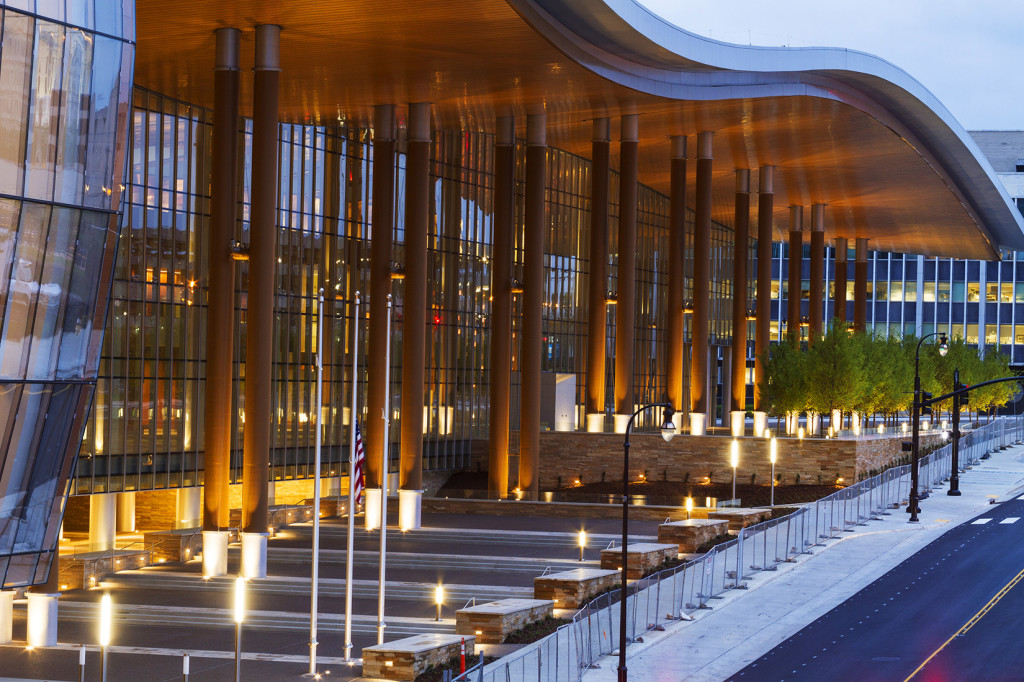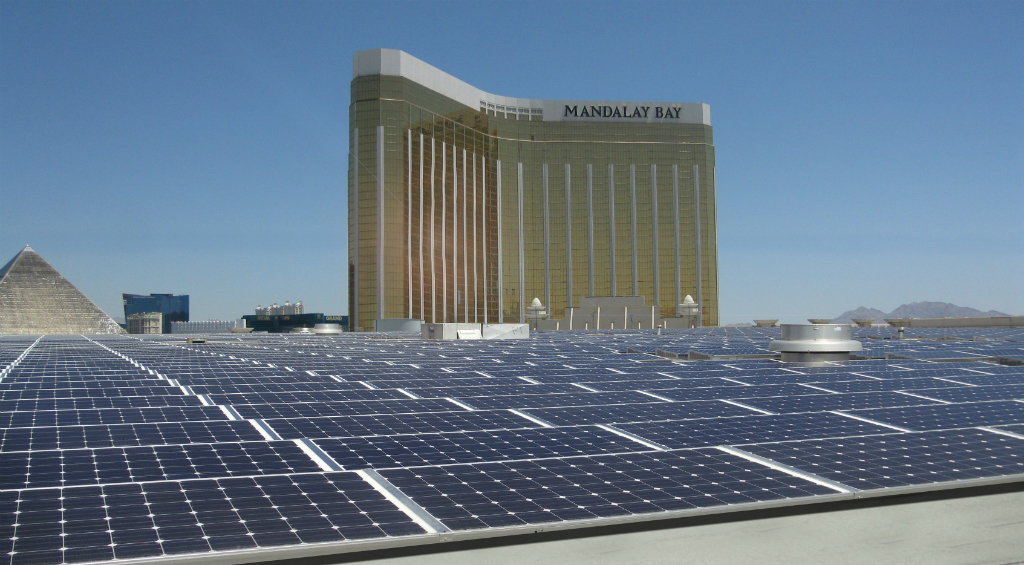Venue Best Practices: Ebola & Bloodborne Pathogens Webinar
This free webinar for venue professionals and companies will include lessons learned from Dallas/Ft. Worth venues, recent updates from front-line agencies, and best practices regarding current regulations and codes for handling bloodborne pathogens in a venue. Learn from the collaborative efforts of IAVM’s Ebola Task Force, formed to assist in providing relevant resources and updates regarding the current pandemic. Additional resources and information are available at iavm.org/avss/ebola.
The webinar will be moderated by Russ Simons, chief listening officer and managing partner at Venue Solutions Group, and a member of the IAVM Ebola Task Force. It will take place Friday, Oct. 31, from noon-1 p.m. (EDT). Registration spots are limited. Please sign up now to ensure participation.
(photo credit: NIAID via photopin cc)
Industry News Weekly Roundup
There was a lot of news this past week. Here are some stories that caught our eyes.
Music City Center to Add iBeacon Technology
—The Tennessean
“In a 1.2 million-square-foot building, directions appearing on a phone screen could be a welcome addition for visitors, as well as help the new facility distinguish itself with the cutting-edge technology.”
New Outdoor Concert Venue Debuts in Downtown Dallas Friday
—The Dallas Morning News
“On Friday, First Presbyterian Church of Dallas kicks off its Encore Park dedication weekend by opening 508 Amphitheater, a 300-capacity outdoor music theater next to 508 Park Ave., the building where, in 1937, blues legend Robert Johnson recorded almost half of the 29 songs that make up his entire discography.”
Battersea Arts Centre to Undergo Final Phase of Redevelopment
—The Stage
“Work on the south London venue began in 2006, and is being undertaken in collaboration with architects Haworth Tompkins, who last week were awarded the RIBA Stirling Prize for their work on Liverpool’s Everyman Theatre.”
Stop People from Wasting Your Time
—Harvard Business Review
“People who waste our time have become the scourge of modern business life, hampering our productivity and annoying us in the process.”
How Convention Centers are Becoming More Flexible
—BizBash
“Venue operators are looking for input from meeting planners when designing spaces, and a recurring theme is the importance of flexible space.”
(Image: Music City Center)
World’s Largest Convention Center Solar Array Installed
MGM Resorts is committed to sustainability, and its new 6.4 megawatt photovoltaic array covers approximately 20 acres on top of the Mandalay Bay Resort and Casino. That makes it the world’s largest rooftop solar array on a convention center. But the company isn’t stopping there. It plans to install an additional two megawatt photovoltaic array on top of a future expansion of the Mandalay Bay Convention Center.
“Today [October 23] marks a major milestone for MGM Resorts, NRG, and the entire Las Vegas community,” said Jim Murren, chairman and CEO of MGM Resorts International. “The completion of this solar array demonstrates our steadfast commitment to the principles of environmental responsibility, and the announcement of the second array reinforces that we’re always looking to do more.”
NRG Energy installed the array, and once the whole project is completed, it is estimated that it will displace approximately 6,300 metric tons of carbon dioxide.
“The rooftop solar installation at Mandalay Bay significantly advances our resort’s commitment to being a leading sustainable destination for conferences and conventions,” said Chuck Bowling, president and COO of Mandalay Bay. “Partnering with a progressive company like NRG to achieve this milestone reinforces our commitment to promoting renewable energy and protecting the planet’s limited resources as supported by our Green Advantage sustainability initiative that has already decreased our energy load by over 14 percent since 2007.”
Mandalay Bay isn’t the only venue to install solar arrays. Last month, the Anaheim Convention Center completed a 2.4-megawatt install solar panel system, covering 300,000 square feet on its rooftop, “making it the largest city-owned, convention center, roof-mounted system in North America.” Also, Amsterdam ArenA is installing 4,200 solar panels on its rooftop, and a soccer field’s lights in Brazil are powered by players’ footsteps.
Additionally, the Orange County Convention Center (OCCC) in Orlando, Florida, installed solar panels in 2009, which help offset 10 percent of its electric bill. The center was awarded a Leadership in Energy & Environmental Design (LEED) for Existing Buildings: Operations & Maintenance Gold (EBOM) certification from The Green Building Certification Institute, an arm of the U.S. Green Building Council, last year.
“We take the approach that sustainability is more than energy efficiency; it’s actually a cultural shift toward environmental responsibility and leadership.” said Jan Addison, CFE, OCCC deputy general manager, in a press release.
(Image: NRG Energy)
Praise for MetLife Stadium’s Security Operations
Take a short break and read this great article from the Associated Press featuring a behind-the-scenes look at MetLife Stadium’s security operations.
“MetLife Stadium previously won a security award and recently was nominated for another one for the system, which cost close to $1 million,” Barry Wilner wrote. “Praise has come from the NFL for implementing a program that the league wants expanded to every team’s home.”
The system Wilner references are the cameras installed inside and outside the stadium.
“The system has the ability to provide views of about a quarter-mile away, showing surrounding roadways and even the Giants’ practice facility,” Wilner wrote.
To learn more, please read the rest of “MetLife Stadium Security a Trendsetter.”
(photo credit: picturesofyou- via photopin cc)
Download the App for IAVM’s Online Member Network
Do you want to receive a Front Row News weekly digest?
Categories
- Allied (861)
- Architecture (147)
- Arenas (747)
- Career (897)
- Convention Centers (895)
- Education (623)
- Events (1,544)
- Food & Beverage (193)
- Foundation (113)
- Guest Experience (1,496)
- Industry News (2,270)
- Leadership (1,888)
- Marketing (150)
- Membership (2,000)
- Music (213)
- Performing Arts Centers (454)
- Professional Development (409)
- Research (127)
- Safety & Security (442)
- Sports (763)
- Stadiums (608)
- Student (159)
- Technology (516)
- Ticketing (92)
- Touring (82)
- Trends (364)
- Uncategorized (734)
- Universities (218)
- Video (25)
- Young Professional (198)
Twitter Feed
- Twitter feed loading
Recent Posts
- Oak View Group Names Chris Granger Chief Executive Officer, Oak View Group
- Raleigh Convention and Performing Arts Complex Hosts Soup Packing Event to Feed Raleigh Residents
- Claire Rothman Blazed the Trail for Women in Venue Management
- Wisconsin Center District Promotes Megan Seppmann to New Leadership Role
- When Welcoming Service Dogs: Everyone Has Rights, Everyone Has Responsibilities
Categories
- Allied
- Architecture
- Arenas
- Career
- Convention Centers
- Education
- Events
- Food & Beverage
- Foundation
- Guest Experience
- Industry News
- Leadership
- Marketing
- Membership
- Music
- Performing Arts Centers
- Professional Development
- Research
- Safety & Security
- Sports
- Stadiums
- Student
- Technology
- Ticketing
- Touring
- Trends
- Uncategorized
- Universities
- Video
- Young Professional
Archives
- December 2025
- November 2025
- October 2025
- September 2025
- August 2025
- July 2025
- June 2025
- May 2025
- April 2025
- March 2025
- February 2025
- January 2025
- December 2024
- November 2024
- October 2024
- September 2024
- August 2024
- July 2024
- June 2024
- May 2024
- April 2024
- March 2024
- February 2024
- January 2024
- December 2023
- November 2023
- October 2023
- September 2023
- August 2023
- July 2023
- June 2023
- May 2023
- April 2023
- March 2023
- February 2023
- January 2023
- December 2022
- November 2022
- October 2022
- September 2022
- August 2022
- July 2022
- June 2022
- May 2022
- April 2022
- March 2022
- February 2022
- January 2022
- December 2021
- November 2021
- October 2021
- September 2021
- August 2021
- July 2021
- June 2021
- May 2021
- April 2021
- March 2021
- February 2021
- January 2021
- December 2020
- November 2020
- October 2020
- September 2020
- August 2020
- July 2020
- June 2020
- May 2020
- April 2020
- March 2020
- February 2020
- January 2020
- December 2019
- November 2019
- October 2019
- September 2019
- August 2019
- July 2019
- June 2019
- May 2019
- April 2019
- March 2019
- February 2019
- January 2019
- December 2018
- November 2018
- October 2018
- September 2018
- August 2018
- July 2018
- June 2018
- May 2018
- April 2018
- March 2018
- February 2018
- January 2018
- December 2017
- November 2017
- October 2017
- September 2017
- August 2017
- July 2017
- June 2017
- May 2017
- April 2017
- March 2017
- February 2017
- January 2017
- December 2016
- November 2016
- October 2016
- September 2016
- August 2016
- July 2016
- June 2016
- May 2016
- April 2016
- March 2016
- February 2016
- January 2016
- December 2015
- November 2015
- October 2015
- September 2015
- August 2015
- July 2015
- June 2015
- May 2015
- April 2015
- March 2015
- February 2015
- January 2015
- December 2014
- November 2014
- October 2014
- September 2014
- August 2014
- July 2014
- June 2014
- May 2014
- April 2014
- March 2014
- February 2014
- January 2014
- December 2013
- November 2013
- October 2013
- September 2013
- August 2013
- July 2013
- June 2013
- May 2013
- April 2013
- March 2013
- February 2013
- January 2013
- May 2012
- March 2012
- December 2011
- November 2011
- October 2011
Recent Comments
- Frank Bradshaw, Ph.D., CVE on John Meyer, CVE, a Tireless Advocate of Certification for Venue Professionals, Has Died
- Neil Sulkes on Hilary Hartung, Friend to Many in Venue Marketing, Has Left Us
- Jason Parker, CVE on The Devastation of Hurricane Helene and How We Can Support One Another
- Larry Perkins on Touhey Testifies Against Speculative Ticketing Before Congressional Subcommittee
- Peter Secord on Major Players for Planned Elkhart Amphitheater Were in the Mix at VenueConnect




